strings up! -
two pieces for forgotten puppets
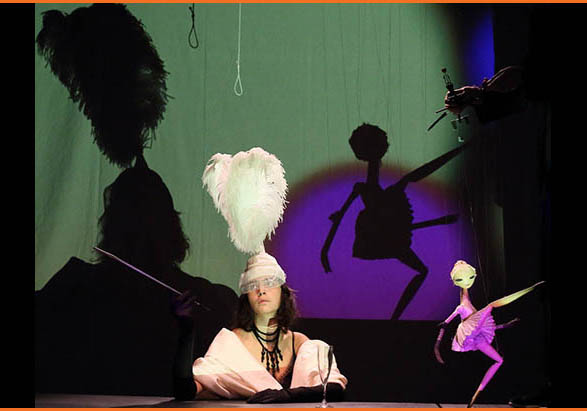
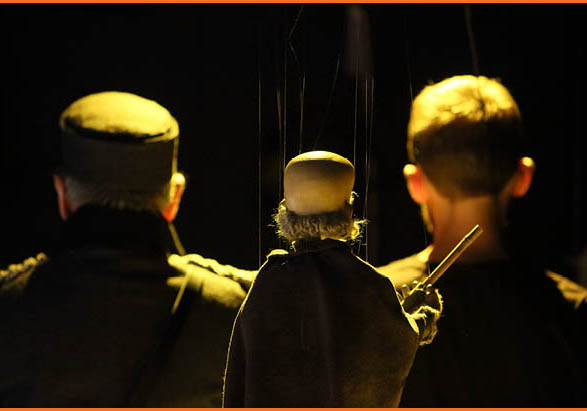
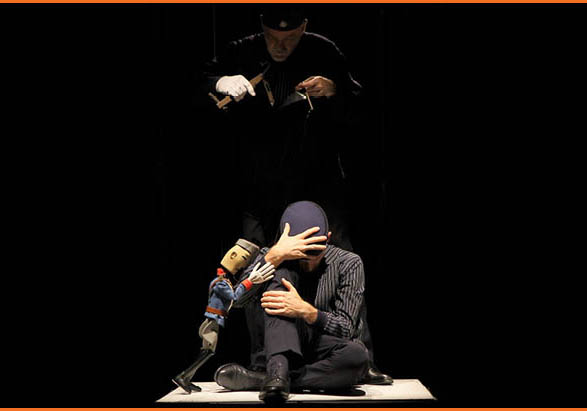
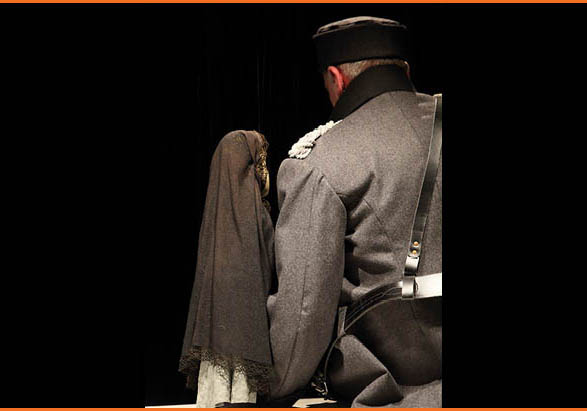
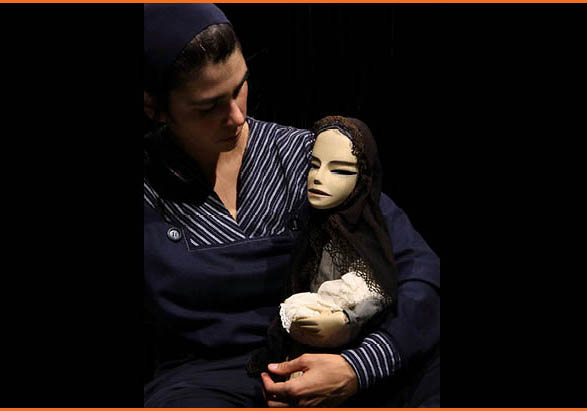
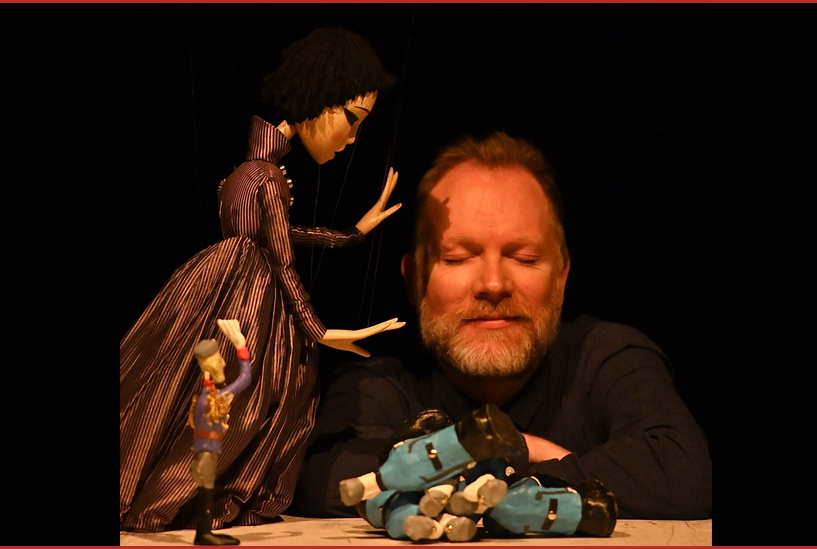
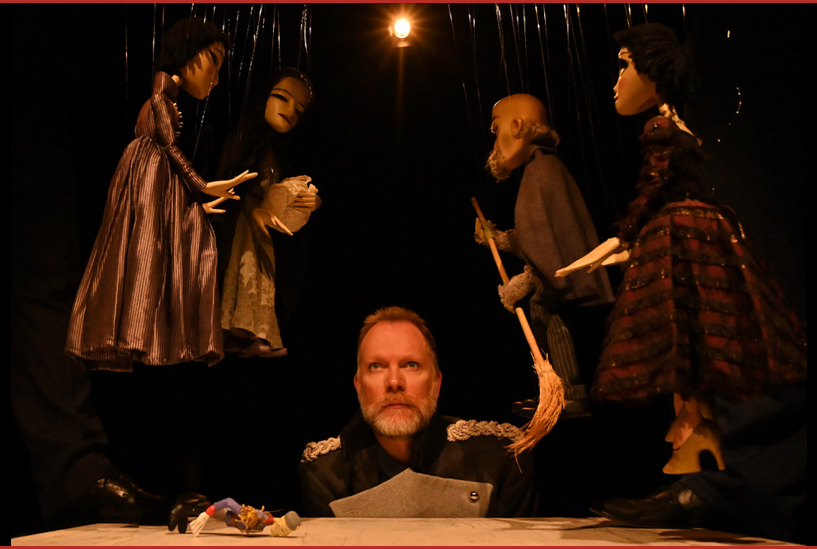
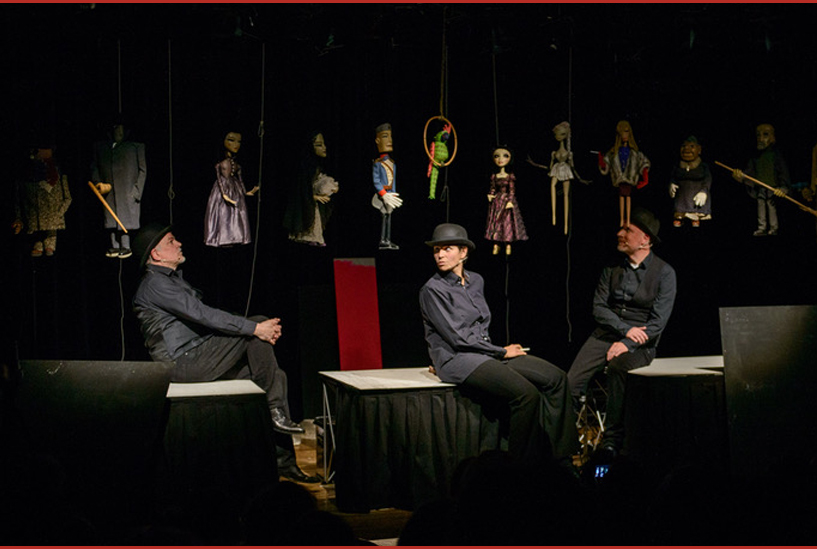
Thirteen fantastic marionettes from the 1950s by the legendary puppet builder Fritz Herbert Bross, originally built for Albrecht Roser and never played, have been rediscovered and restored. Now they can be experienced in a two-part programme on one evening:
In the first part, “totentanz recomposed”, the audience’s gaze moves among three people and six marionettes, guided by the focus of alternating lights: Atmospheric portraits that gradually unleash history, create relationships, and weave together the past and the future. The Vivaldi re-composition “Recomposed” by Max Richter, recorded in 2012 with Daniel Hope under the direction of André de Ridder, seems to be the ideal soundtrack for this. Three people and six marionettes on continuously changing levels, put into juxtaposition by a montage of light and darkness, re-tell and re-compose history.
In the second part, we present seven characters built for a thriller. Champagne for forgotten characters!
Premiere: 10 October 2019, FITZ Figurentheaterzentrum Stuttgart
Length of performance: two 35-minute acts with a 15-minute interval (total 85 min)
Made possible in part by: Landesverband Freie Tanz- und Theaterschaffende Baden-Württemberg e.V. with funds from the Ministry of Science, Research and the Arts Baden-Württemberg, FITZ Stuttgart, and the Cultural Office of Tübingen.
For their help with research, we warmly thank Markus Dorner of PuK Museum Bad Kreuznach, Thomas Zürn, the Puppet Theater Collection at Münchner Stadtmuseum, and especially Ingrid Höfer of Studio Roser.
press reviews
"strings up" directed by Frank Soehnle gives the almost forgotten figures a fantastic appearance. The players of the Figurentheater Tübingen become part of the magical world of the puppet show.
Süddeutsche Zeitung, 28.11.2020
Back to Bross
Frank Soehnle and Co. revive the tradition and illuminate the future of puppetry
An enchanting evening in two parts, a good half-hour each, revealing the whole fascination and magic of puppet theatre: “strings up!” is the new production of figuren theater tübingen. This is fantastic theatre in miniature: wordless, weightless, floating and invigorating. A further development of the genre, yet aware of its roots. Fritz Herbert Bross’ figures, simple in a sophisticated way, are an eye-catcher in themselves. Soehnle and his fellow performers interact with them in utmost sensibility and seriousness, offering them the highest respect. The part representing the whole, pars pro toto, with numerous changes of perspective and different focuses. And all with a gracefulness that holds us captive.
Südwestpresse, 14.11.2019
Finds from the past
Hanna Malhas, Christian Glötzner and Frank Soehnle guide the puppets calmly, “serving” them in a distinguished manner. Their respect, however, does not prevent them from presenting the marionettes in circus performances and suggestive flirtations. A moving and entertaining evening with depth.
Stuttgarter Zeitung, 12.10.2019
The second life of marionettes
The new production of figuren theater tübingen brings forgotten figures to light
The language of the puppet builder, time now clinging to his marionettes, becomes a source of inspiration for the Tübingen stage, leading to poetic sequences, images that casually string together with magical ease: cheerful, comical, dark, and sometimes even weightless. Then the puppets take off by their strings, circle over the stage, fragments of old stories that playfully fit into new ones. In both pieces, the puppeteers themselves enter the scene, enlarging the puppet action and becoming part of the magical world of shadow, light, and resurrected imagination.
Reutlinger Generalanzeiger, 14.11.2019
Forgotten puppets
These marionettes are excellently guided on the one-handed crosses developed by Bross, which enable the experts to guide the very mobile figures with incredible precision. Soehnle directs and seemingly logically combines the old figures and a modern dramatic style to create a contemporary performance. In addition, the "forgotten figures" show that they can definitely keep up with the times and are timeless in their richness of imagination and functionality.
Ludwigsburger Kreiszeitung 18.10.2019
cast
| puppets | Fritz Herbert Bross |
| performance | Hanna Malhas |
| Frank Soehnle | |
| Christian Glötzner | |
| director | Frank Soehnle |
| costumes | Evelyne Meersschaut |
| choreography | Karin Ould Chih |
| music | Max Richter "Vivaldi Recomposed" |
| photos | Julia Pogerth |
about the production
METHOD
The working method of devising a piece from existing figures is seamlessly linked to the concepts specially developed in figuren theater tübingen. Already in productions like “Flamingo Bar” (1996), a piece, a composition of visual theatre with its own logic and laws, was developed from the puppets as the starting point. But in connection with the Bross puppets, a new dimension emerges: an inquiry into the history of puppet theatre, a reaching for the roots. From the 1950s to the 1970s, Fritz Herbert Bross, based in Stuttgart, became known internationally as a set designer, director, and puppet builder. Some of the marionettes in GUSTAF UND SEIN ENSEMBLE, Albrecht Roser’s famous programme for solo marionettes, were built by Bross. Today’s modern marionettes are based on his fundamental ideas and inventions.
RESTORATION & INSPIRATION
As soon as we began restoring the Bross puppets, we realised we were dealing with exquisitely balanced masterpieces. Puppets of such high quality are rarely built today. But it is precisely their “otherness” that has the potential for great inspiration. A new approach to handling old instruments can possibly create a new understanding of the puppet and its importance. 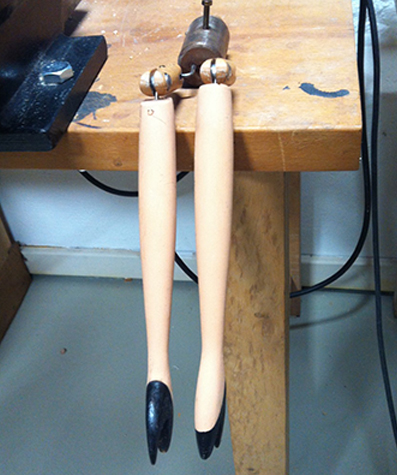
Fritz Herbert Bross’s view that a marionette should first of all “express itself” is more up-to-date than ever – and still controversial. His belief in the puppet’s expression through its specific movement is manifested in the found ensemble of figures, and points to the future.
The PUPPET BUILDER Fritz Herbert Bross
(2. September 1910 in Stollberg – 24. May 1976 in Schwäbisch Hall) analysed and developed the function of marionettes in the 1940s and 1950s based on his training as a mechanical engineer. Bross came from a family of wood sculptors. At the request of his parents he first learned a bread-and-butter trade: He became an engineer and worked for Porsche before the war. 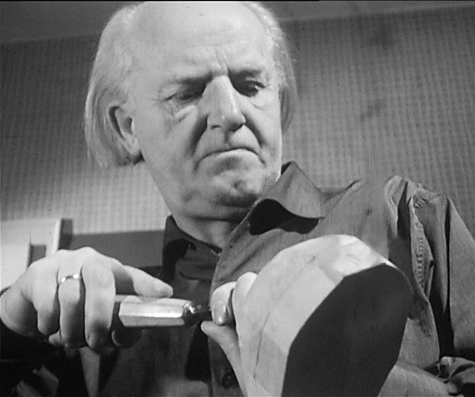 After the Second World War, he decided to build only puppets – hand puppets at first, then later marionettes. From 1958-1967, Fritz Herbert Bross led the seminar for marionette construction and performance at Deutsches Institut für Puppenspiel (German Institute for Puppetry) in Bochum and then took over the artistic direction of the marionette theatre “Gerhard’s Marionetten” in Schwäbisch Hall. When analysing the technical and aesthetic effects of puppets, he not only drew on his family roots and his studies of mechanical engineering, but also from his knowledge of art history acquired during his time at university.
After the Second World War, he decided to build only puppets – hand puppets at first, then later marionettes. From 1958-1967, Fritz Herbert Bross led the seminar for marionette construction and performance at Deutsches Institut für Puppenspiel (German Institute for Puppetry) in Bochum and then took over the artistic direction of the marionette theatre “Gerhard’s Marionetten” in Schwäbisch Hall. When analysing the technical and aesthetic effects of puppets, he not only drew on his family roots and his studies of mechanical engineering, but also from his knowledge of art history acquired during his time at university.
Bross control bar
In particular, Bross developed a one-handed control bar, which enables very precise puppet guidance. His insights into marionette building are still considered cutting-edge today. This diagonal control is known as the “Bross-Kreuz” (Bross control) in the German-speaking world, and as the “German system” worldwide. In the marionettes designed by Bross himself, his artistic gesture unites with technical ingenuity to create a great stage effect, especially with regard to the playability and mobility of the artifact designed for stage performance. Bross built puppets for many professional puppet theatres. Bross’ most famous student was Albrecht Roser, who explored and developed the Bross system further, in many facets.
The “found” ensemble, discovered in 2017 in boxes in Albrecht Roser’s studio house in Remshalden-Buoch:
Six puppets for “Totentanz” (1954 – 58):
The Soldier, The Mother, The Sweeper, Beauty (La Belle), The Beast, La Miserabella
Three puppets for “Kriminalgeschichte” (1958 – 60):
Floozy “Cissi”, Cigar “Krause”, Walking Stick “Edu”
As well as two puppets from Roser’s collection:
Crook with Pistol (1960), Mrs. Schnibbelchen (1956)
Film puppet from “Katzenmusik” (Cat Music) SWR
Cockatoo (1954)
On loan from the puppet theatre programme at University of Music and the Performing Arts in Stuttgart
Dancer (1962)
technical staging specifications
STAGE AREA
- Stage requirements including wings: 6 m x 5 m (width x depth), ideal 8 m x 6 m
- Tiered audience seating
- Stage area height at least 3m
- Complete darkness essential
- A minimum distance of 1.5 m from edge of stage to 1st row of seating
- A gridiron, or several possibilities for securing objects to the ceiling above the stage area (see stage plan)
TECHNICAL DETAILS
Version A with our own lights:
- 2 x 1000 W house lights
- Stage assistants to help with assembly and dismantling of stage set
- 2 x power connection 220 V / 16 A
or Version B with lighting provided by the hosting venue:
- a 15-channel lighting control desk
- 4 x 1 KW profilers
- 12 x 600 W PCs
- 2 floor-tripods for profilers
- 1 floor-tripod for PC
- Stage assistants to help with assembly and dismantling of stage set
- Dressing room facilities with sink to accommodate 4 people
TIME
- Length of performance: two 35-minute acts with a 15-minute interval (total 85 min)
- Set assembly time: 5 hours / Set dismantling time: 1 hour
Essential – please take note!
- It must be possible to darken the stage area completely (blackout)
- Maximum audience capacity: 150 persons
- The performance is suitable for youth and adults
Please discuss all variations with us in advance.
Your contact for technical questions:
Christian Glötzner, +49 176 7129 7676



